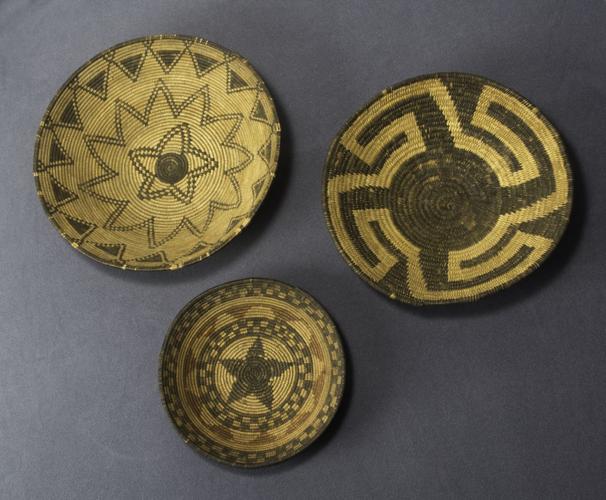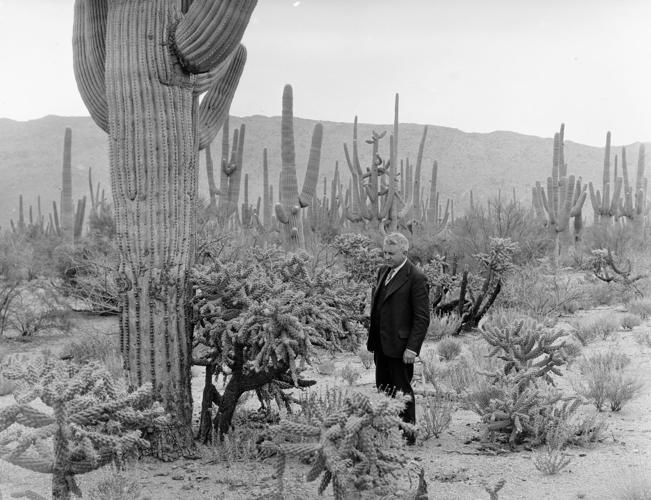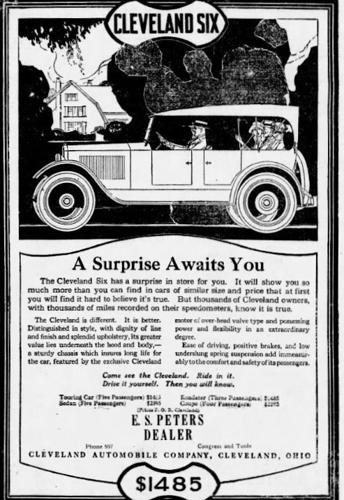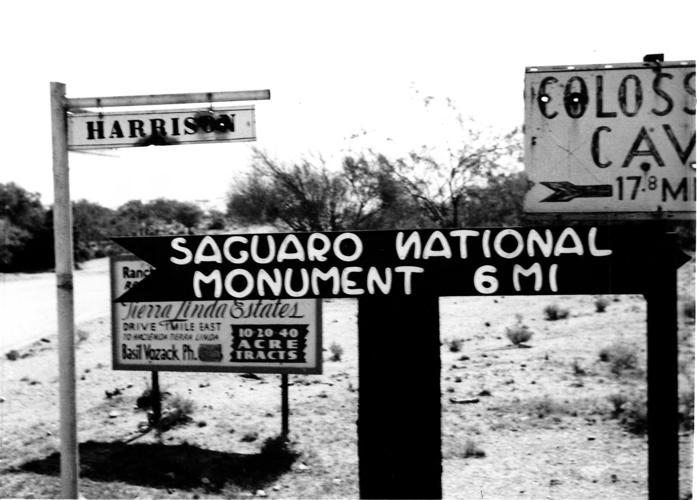A man who had a hand in creating Saguaro National Park is remembered with a street named for him on Tucson’s far east side.
John E. Harrison Jr. was born to Rev. John E. and Mary “Mollie” (Walton) Harrison on Aug. 23, 1886, in Franklin, Tennessee.
By 1892 the family was living in Pulaski, Tennessee, where his brother Walton McCord Harrison was born. The family also had an older daughter, Mary P. Harrison.
In 1894, Harrison’s family was in Texas, where his parents and aunt Sara Walton opened the San Antonio Female College. His father ran the college for many years.
In 1917, Harrison was working as a farmer in Cotulla, Texas, southwest of San Antonio, but still listed his home address as the San Antonio Female College. He served in World War I and earned a Victory Medal for his duty.
Around 1920, part of the Harrison family relocated to Arizona. John Sr. and Mollie moved to Phoenix while John Jr. came to Tucson.
Harrison found residency at the YMCA and got an office job at the E.S. Peters car dealership before becoming a salesman, selling the latest models of Oakland, Cleveland and Chandler automobiles.
By 1921, he was dealing in real estate in Tucson. He had land dealings in the old Drakes Addition, where the Student Recreation Center of the University of Arizona now sits.
The following year, on February 6, Harrison wed Maude Pierce in Phoenix. A few months after the wedding the couple bought a seven-passenger Chandler automobile from E.S. Peters for $1,600. It’s believed the marriage was short lived and ended in divorce.
By 1928, Harrison was living in Wrightstown, Arizona, the namesake of Wrightstown Road and now a part of Greater Tucson.
In 1929, Harrison and future partner Frank Peyton, among others, petitioned the Pima County Board of Supervisors to create a road on the far-east-side. Harrison Road was officially established in July 1929. A couple of years later Harrison presented his subdivision, Harrison Estates, to Pima County Supervisors for approval.
Also in 1929, Homer Shantz, president of the University of Arizona, commissioned Harrison to purchase the rights on all tracts of land in a unique, natural area known for its thick stand of saguaro cactus, known then as the Tanque Verde Cactus Forest or University Cactus Forest. The purpose of the acquisition was to aid in the preservation of old saguaros, to use as a scientific preserve and lastly to be an astronomical observatory in an area not affected by artificial light. Harrison purchased 480 acres for the university and continued to get options from private land owners.
In the meantime, in early 1932, Gen. Frank H. Hitchcock — namesake of Gen. Hitchcock Highway and publisher of the Tucson Daily Citizen newspaper — began pushing Washington to create a preserve for saguaros in Tucson. This lobbying resulted in the large group of saguaros originally called the Tanque Verde Cactus Forest becoming the Saguaro National Monument in 1933. Although it was a monument, much of the land was still in private hands.
The original area included 640 acres bounded by Speedway, Broadway, Wentworth Road and Freeman Road — the homestead of Henry and Jane Wentworth. Wentworth Road takes its name from the family and might be a memorial to rancher Henry Wentworth, who was murdered in 1928. Later, this area was removed from the boundaries of Saguaro National Monument, now called Saguaro National Park.
In 1934, Harrison expressed his concern for Saguaro National Monument and its need for a full-time ranger likely to prevent damage or theft of saguaros. He offered his own services but no one seemed to have the authority to create the position. The following year a ranger was hired — and would report on possibly the only time Observatory Hill, once planned as the location of the university’s new observatory telescope — was used for astronomical purposes:
“Dr. Caroline E. Furness of Vassar (College), Dr. and Mrs. Edwin F. Carpenter and Mrs. J.D. Williams of the University of Arizona, all astronomers, held a weiner (sic) and marshmellow (sic) party on the summit of Observatory Hill, Friday evening, March 22, 1935.”
For a few more years Harrison worked under contract for the University of Arizona, obtaining options on land inside the monument that was in private hands. He was never able to sell the land for the university and, in turn, never earned his commission on the sale. In 1938, he turned over the land options to a firm in Phoenix and walked away from the project. Years later the land became the property of the federal government and is now Saguaro National Park East.
In August 1944, Frank Peyton, a long-time probation officer, joined the newly reorganized Southern Securities Co., as secretary-treasurer, with Harrison as its president. The firm was developing the Mirasol Addition along Park Avenue from roughly 26th Street to 32nd Street. The intended clientele was believed to have been African-Americans soldiers returning from the war.
In 1945, Harrison sold land very close to Harrison Estates to Tom C. Igo and it’s believed that, at one point, Igo acquired Harrison’s old home at 9124 E. Speedway Blvd. Within two years, Hoffman Road became Igo Way.
Harrison retired around 1951, and about that time he began doing his extensive family genealogy dating back to the 1700s. He may have been trying to find rumored family connections with Presidents Benjamin Harrison and William Henry Harrison.
John Ellis Harrison Jr. died at his ranch at 12451 E. Speedway on Aug. 24, 1957. His sister Mary Bruhl had him buried in San Antonio.
Upon his death Harrison’s collection of Southwestern Native American artifacts — including a bow and steel-tipped arrow believed to be Apache, numerous woven baskets believed to be of Pima and Tohono O’odham origins and a gourd water bottle believed to be Pima Indian — were donated to the Arizona State Museum. They comprise the John E. Harrison Jr. collection.












